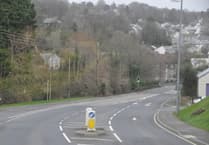On a spring morning 112 years ago, excited and hopeful passengers started boarding the luxurious passenger ship at Southampton’s White Star Dock. The ship took its name from a family of giants called the Titans in Greek mythology. The HMS Titanic was set to make its maiden voyage for New York. Of the estimated 2,224 people on-board, there were 62 passengers and crew that were from Cornwall. One quartermaster crew member born in Newlyn was at the helm when the Titanic struck the iceberg on April 14. His name was Robert Hichens.
The Titanic departed Southampton to great fanfare and poignant farewells. With regal splendor it sailed down the English Channel, across the coast of Cornwall, and would have been visible from Porthcurno and other locations in the county. Then it was at full speed as it stretched out into the Celtic Sea and into the Atlantic.
The tragedy of the Titanic’s demise still resonates - the current of heartbreaks at sea often uniquely sway across the consciousness of humanity for many years. The circumstances and sheer scale of this particular disaster were profound. 1,503 individuals died in the freezing North Sea on that fateful early morning on April 15. Families who lost loved ones deeply grieved, individuals who survived carried trauma the rest of their lives.
Robert Hichens survived the Titanic sinking. Because he had literally held the wheel when hitting the iceberg, Hichens’ fractured soul shouldered an unimaginable burden for the rest of his troubled life. The immediate aftermath of the disaster had Hichens testifying as a principal witness before US and UK inquiries. The implication being made by these inquiries was that it was Hichens who made the navigation errors. We cannot know for sure what happened on deck, but we can be certain of the load of remorse and trauma that Hichens felt. His life and mental health quickly turned dark. Hichens was very likely suffering from PTSD. After the Titanic’s sinking, he was divorced from his wife and lost his family, became an alcoholic, was jailed after shooting a man, and had trouble finding work.
In 1940, Hichens had returned from an arduous journey to help take coal to Africa during WWII. The port of call was Aberdeen in Scotland where the ship had docked. As the crew prepared to come ashore, one of the crew members found Hichens dead on board. He had died alone of heart failure. Hichens was buried at Aberdeen’s Trinity Cemetery in an unmarked grave. In recent years, his family erected a marked grave in the same spot.
As I reflect on the Titanic tragedy, there are countless stories to pull out. The story of Robert Hichens is a heartbreaking one, but it can teach us many lessons. An important lesson is that as we continue our journey, we will inevitably commit unintended errors – some more consequential than others. We must be prepared to forgive ourselves, seek support if we are in pain, or serve those who shoulder regret. We do not know if Hichens himself made a fatal error in hitting the iceberg, but likely a day never passed without him thinking about the Titanic, and regretting the decisions he made that chilling day it sank. He was a soul that was haunted in life, and now like all the victims is at peaceful rest. What we have is a treasured moment of life to strive to do good by others and ourselves.
Ian Houston is a regular columnist for this paper. He resides in the Washington, DC area.




